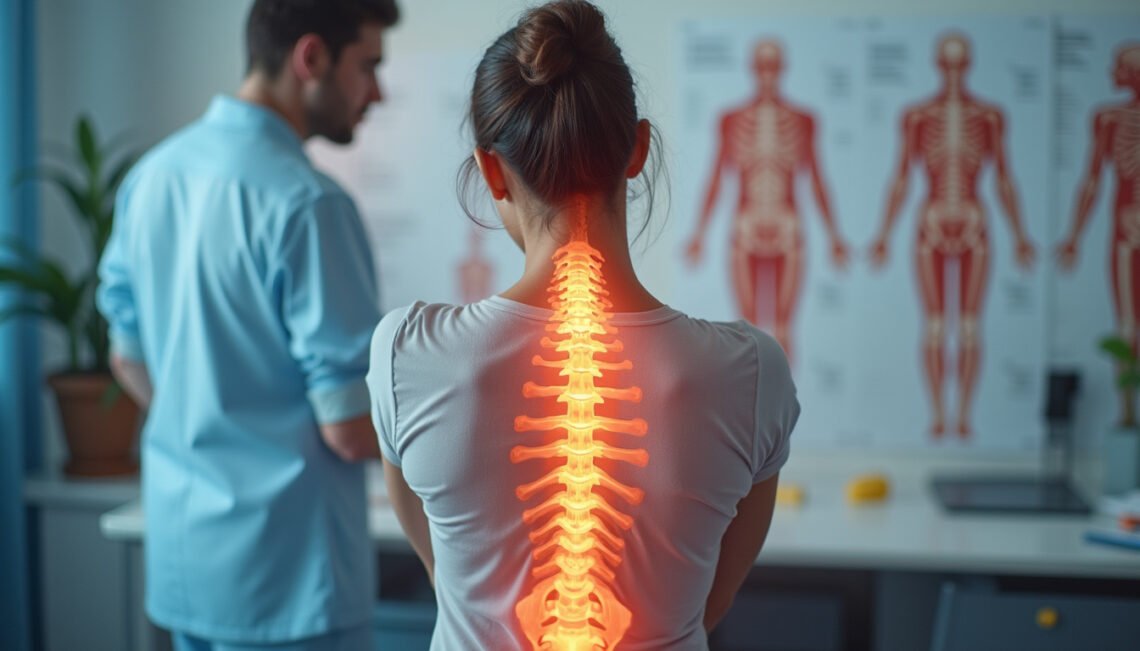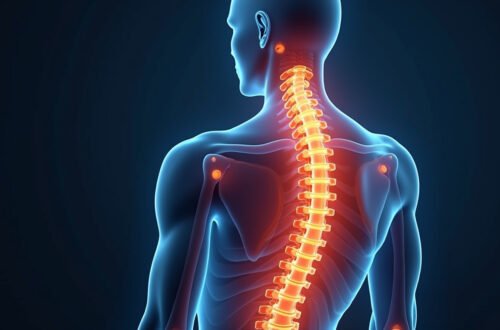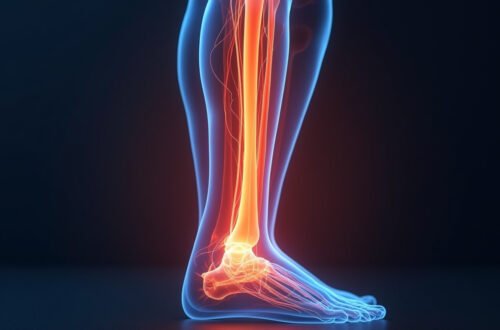Maintaining a healthy back is crucial for overall well-being, and a lumbar physical assessment plays a vital role in diagnosing and managing lower back issues. This assessment focuses on the lumbar region of the spine, which supports much of the body’s weight and is prone to injury and strain. Understanding how to perform and interpret a lumbar physical assessment can help healthcare professionals and individuals alike in identifying potential problems early, preventing further injury, and promoting effective treatment plans.
In this comprehensive guide, we will explore the key components of lumbar physical assessment, its importance, techniques used, and ways to optimize lumbar health.
What Is a Lumbar Physical Assessment?
A lumbar physical assessment is a clinical evaluation of the lower back region, typically encompassing the vertebrae from L1 to L5. It assesses the structural integrity, function, and pain sources within the lumbar spine. The assessment can provide insights into conditions such as muscle strain, herniated discs, spinal stenosis, and other lumbar pathologies.
Healthcare providers use this assessment to:
- Determine the cause of lower back pain.
- Evaluate the range of motion and strength.
- Identify neurological deficits.
- Plan appropriate treatments or referrals.
Why Is Lumbar Physical Assessment Important?
Lower back pain affects millions worldwide and is one of the leading causes of disability. A thorough lumbar physical assessment is crucial because:
- It helps detect early signs of injury or degeneration.
- It differentiates between musculoskeletal and neurological causes.
- It guides rehabilitation and physical therapy programs.
- Reduces the risk of chronic back problems through timely intervention.
Without a proper assessment, underlying problems may go unnoticed, resulting in prolonged discomfort or worsening conditions.
Key Components of a Lumbar Physical Assessment
A lumbar physical assessment generally consists of several steps, each designed to test specific aspects of the lumbar region’s function and health. Here are the primary components:
1. Patient History and Symptom Review
Before any physical tests, gathering a detailed patient history is essential. This includes:
- Duration, location, and intensity of pain.
- Any recent injuries or trauma.
- Impact on mobility or daily activities.
- Previous treatments or surgeries.
- Neurological symptoms like numbness or weakness.
This information helps tailor the physical exam and narrows down potential causes.
2. Observation and Inspection
The healthcare provider observes the lumbar region for:
- Posture abnormalities — such as excessive lordosis or kyphosis.
- Muscle atrophy or asymmetry.
- Visible deformities or swelling.
- Gait patterns that might indicate back dysfunction.
3. Palpation
Palpating the lumbar spine involves gentle touching and pressing of the vertebrae, muscles, and soft tissues to identify:
- Tenderness or pain points.
- Muscle spasms or tightness.
- Temperature changes indicating inflammation.
4. Range of Motion (ROM) Testing
Assessing the lumbar spine’s flexibility is vital. Patients perform movements such as:
- Flexion (bending forward).
- Extension (bending backward).
- Lateral flexion (side bending).
- Rotation (twisting the torso).
Restricted or painful movement may indicate structural or muscular issues.

5. Neurological Examination
This tests for nerve involvement by evaluating:
- Reflexes (such as the patellar or Achilles tendon reflex).
- Muscle strength in the lower limb.
- Sensory testing for numbness or tingling.
- Special tests like the straight leg raise to identify nerve root irritation.
6. Special Tests
Certain maneuvers help diagnose specific lumbar conditions. These include:
- Straight Leg Raise (SLR) Test: To identify lumbar disc herniation or sciatica.
- Valsalva Maneuver: To increase intra-abdominal pressure and assess pain reproduction.
- Slump Test: Checks for neurological tension in the spinal cord.
Step-by-Step Lumbar Physical Assessment Guide
For healthcare practitioners or students, performing a lumbar physical assessment requires systematic execution. Here’s a simplified step-by-step approach:
- Review Patient History: Clarify symptoms and onset.
- Observe Posture and Gait: Look for alignment and compensations.
- Palpate Lumbar Region: Identify tender or tight areas.
- Test Lumbar Range of Motion: Have patient bend, extend, twist, and side bend.
- Perform Neurological Tests: Check reflexes, strength, and sensation.
- Conduct Special Tests: Use SLR, Valsalva, and Slump as needed.
- Document Findings: Note abnormal responses and pain triggers.
- Develop Management Plan: Based on assessment results.
Tips for Optimizing Lumbar Health Post-Assessment
Once a lumbar physical assessment identifies your back’s condition, maintaining or improving lumbar health is essential. Incorporate these strategies:
- Exercise Regularly: Focus on strengthening the core and lower back muscles.
- Practice Proper Posture: When standing, sitting, and lifting.
- Use Ergonomic Supports: Chairs and mattresses that support lumbar curvature.
- Maintain Healthy Weight: Reduces strain on the lower back.
- Stay Hydrated and Nourished: To keep spinal discs healthy.
- Avoid Prolonged Sitting: Take breaks to stretch and move.
Consulting a physical therapist or healthcare provider for personalized back care plans is highly recommended.
Common Causes of Lumbar Pain Diagnosed Through Assessment
Understanding the common lumbar conditions identified via physical assessment can highlight the importance of timely evaluation:
- Muscle Strain: Usually from overuse or sudden movement.
- Lumbar Disc Herniation: Causes nerve compression leading to pain and numbness.
- Degenerative Disc Disease: Age-related wear affecting spinal flexibility.
- Spinal Stenosis: Narrowing of spinal canal causing nerve irritation.
- Spondylolisthesis: A vertebra slips forward, causing instability.
Early identification leads to better outcomes.
FAQ About Lumbar Physical Assessment
Q1: What should I expect during a lumbar physical assessment?
A lumbar physical assessment involves a thorough examination of your lower back, including movement tests, muscle checks, and neurological evaluations. The provider will ask about your symptoms and observe your posture to understand your back health better.
Q2: How often should lumbar physical assessments be done?
For general back health, annual assessments may suffice unless you experience symptoms like pain or mobility issues. If you have chronic back problems, more frequent evaluations may be recommended.
Q3: Can a lumbar physical assessment detect all back problems?
While a lumbar physical assessment is very effective, it may not detect every condition. Sometimes imaging tests like MRI or X-rays are needed to supplement the assessment for a complete diagnosis.
For additional information on spine health assessments, visit the American Academy of Orthopaedic Surgeons’ website (source).
Conclusion: Take Control of Your Back Health Today
A lumbar physical assessment is an indispensable tool for understanding and managing lower back health. Whether you’re a healthcare professional or someone concerned about back discomfort, knowing the components and significance of this assessment empowers you to take proactive steps. Remember that early detection and consistent care can prevent chronic pain and improve your quality of life.
Don’t wait until back pain limits your daily activities. Schedule a lumbar physical assessment with a qualified provider to diagnose any issues early and receive appropriate care. Your lumbar spine supports your every move—give it the attention it deserves!






